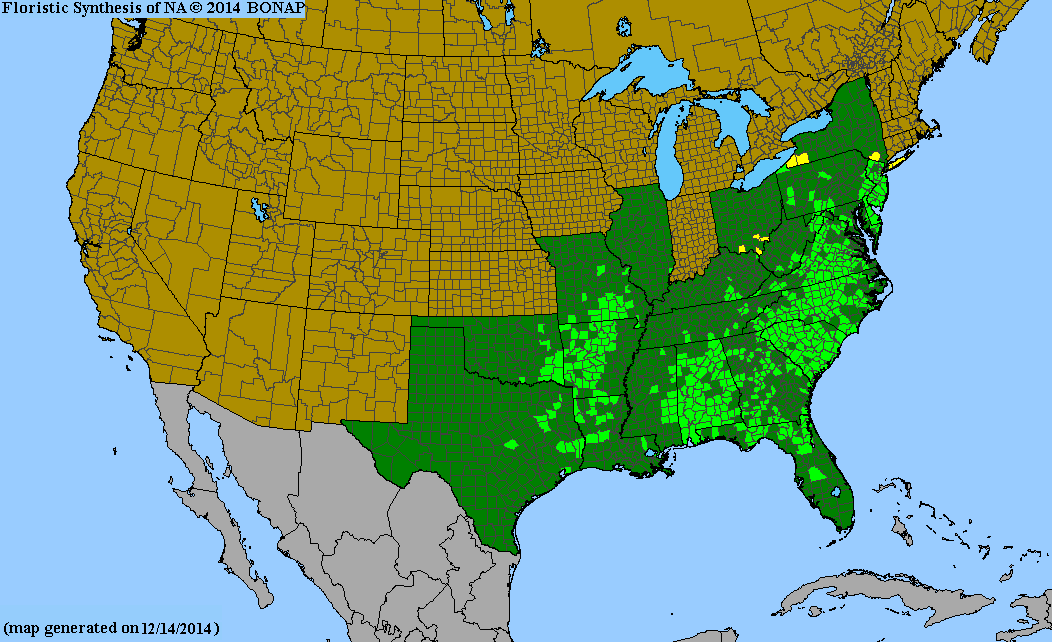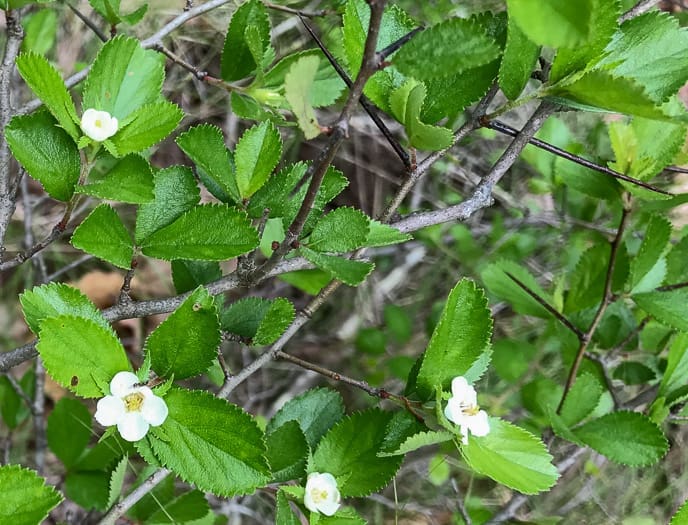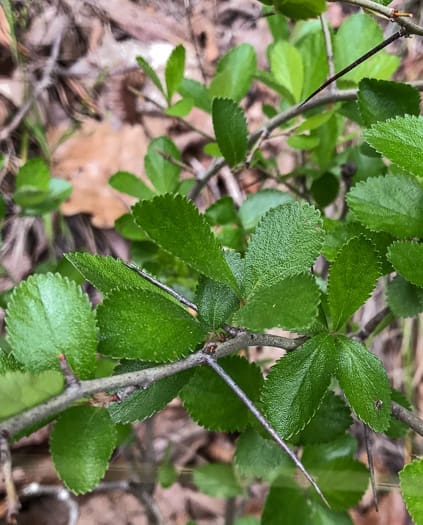Rosaceae
oneflower hawthorn
Crataegus uniflora
Synonyms
Crataegus bisulcata, Crataegus raleighensis
Other Common Names
dwarf hawthorn, thornapple
Plant Type
Shrub (less than 10 ft)
Life Cycle
Perennial
Typical Size
2-12 ft. tall
3-10 ft. wide
Tolerant of
Drought, Occasional Flooding
Plants/Diseases
No known disease or pest issues.
Wildlife Benefits
Nectar/pollen source for pollinating insects, Host plant for butterfly larvae, Fruit/seeds for birds, Supports numerous caterpillars (bird food)
Leaves
Alternate leaf arrangement. Leaves glossy, simple. Shape is elliptical, oblong to ovate with crenate or serrate margins.
Flowers
White solitary flowers with 4-5 petals. Fragrance may be unpleasant, but attracts midges for pollination.
Fruit
The green yellow to dull red pomes are 1 x 1 inch and harvested in the fall
Bark
Light gray and scaly. New twigs sig zag and exhibit a brown to red/burgundy color.
Toxicity
No known toxicity.
Edibility
Fruits are edible.

USDA Hardiness Zones
4, 5, 6, 7, 8, 9
Light Exposure
Full Sun, Part Sun/Shade
Soil Moisture
Moist
Soil Drainage
Well-drained
Soil pH
Acidic (less than 6.0), Neutral (6.0-8.0), Basic (greater than 8.0)
Native in South Carolina?
Yes
Plant Native Habitat
Sand barrens, sandhills, open scrubby woodlands, often associated with P. palustris, P. rigida and xerophytic species of Quercus and Carya.
Global Conservation Status (NatureServe)
Secure (G5)
Federal Conservation Status (USFWS)
Not Listed
Distribution Notes
Common throughout South Carolina


